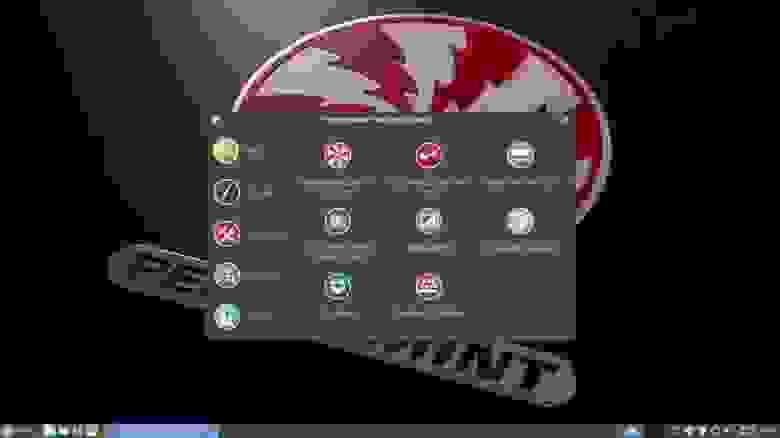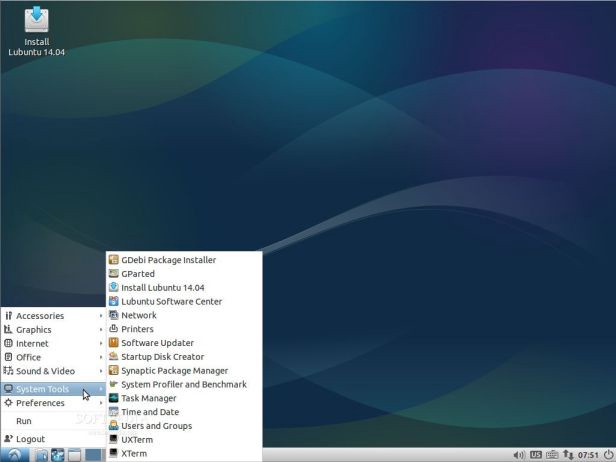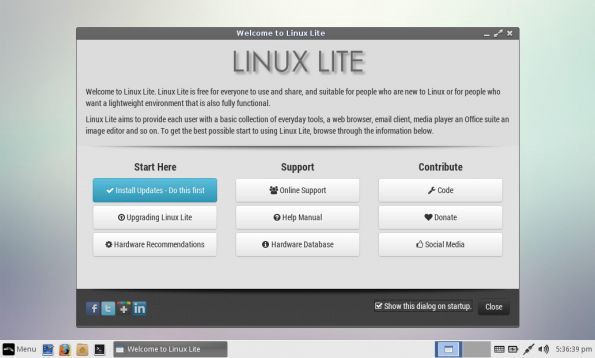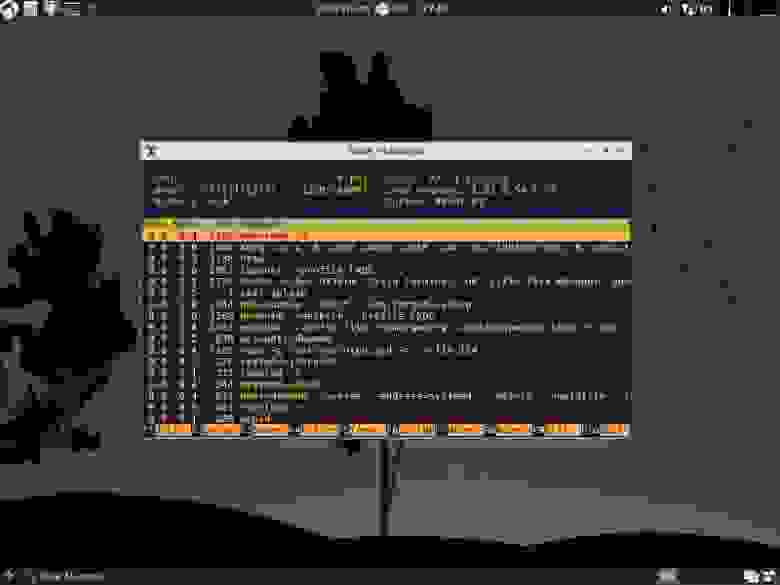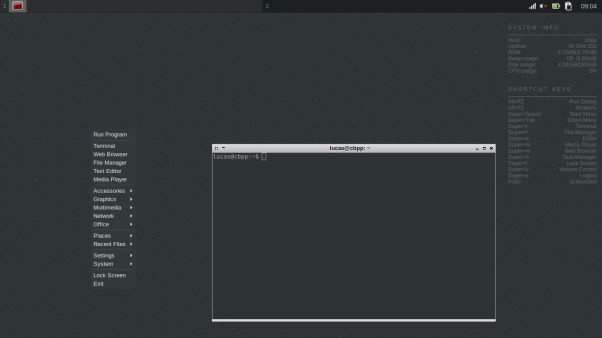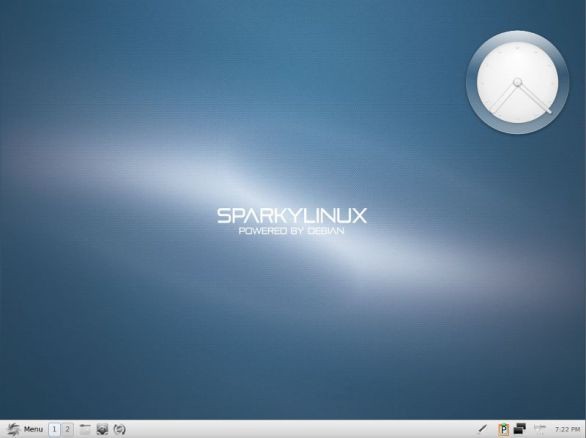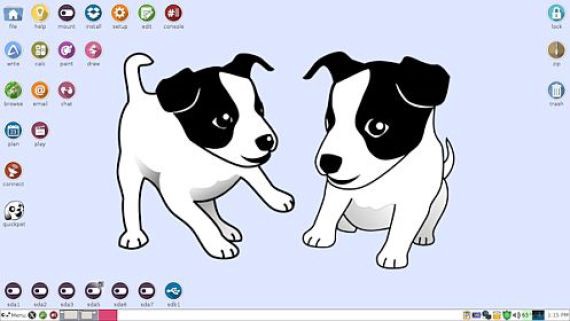- Лучшие дистрибутивы Linux для старых компьютеров
- Лучшие легкие дистрибутивы Linux для старых ноутбуков и десктопов
- 10. Peppermint
- 9. Lubuntu
- 8. Linux Lite
- 7. LXLE
- 6. CrunchBang++
- 5. Bodhi Linux
- 4. antiX Linux
- 3. SparkyLinux
- 2. Puppy Linux
- 1. Tiny Core
- Lightweight Linux Distros for Old Laptop (2021)
- 1. Lubuntu
- 2. Linux Lite
- 3. Tiny Core
- 4. AntiX Linux
- 5. Peppermint
- 6. LXLE
- 7. Bodhi Linux
- 8. CrunchBang ++
- 9. SparkyLinux
- 10. Puppy Linux
- 11. Trisquel Mini
- 12. MX Linux
- 13. Devuan Linux
- Conclusion
Лучшие дистрибутивы Linux для старых компьютеров
Вкратце: пока не бросайте свой старый компьютер — используйте легкий дистрибутив Linux, чтобы возродить его!
Что вы делаете со своим старым компьютером? Тот, который когда-то имел хорошую аппаратную конфигурацию, но теперь считается устаревшим. Почему бы не восстановить его вместе с Linux? Я собираюсь перечислить лучшие легкие дистрибутивы Linux, которые вы можете использовать на своем старом ПК.
Лучшие легкие дистрибутивы Linux для старых ноутбуков и десктопов
Я постараюсь упорядочить список в порядке убывания требований к оборудованию. Это означает, что легкому дистрибутиву Linux, занимающему первое место, потребуется минимальное аппаратное обеспечение.
10. Peppermint
Peppermint — это облачно-ориентированный дистрибутив Linux, не требующий мощного железа для запуска. Он основан на Lubuntu и использует окружение рабочего стола LXDE для более плавной работы.
Peppermint OS поставляется совместно с ICE — приложением для интеграции любого веб-сайта в качестве настольного приложения.
Минимальные системные требования для Peppermint OS:
RAM: 1 ГБ оперативной памяти (рекомендуется 2 ГБ)
CPU: Процессор на базе архитектуры Intel x86
Место на жестком диске: Не менее 4 ГБ свободного дискового пространства
Скачать дистрибутив вы можете здесь.
9. Lubuntu
Следующий дистрибутив в нашем списке — Lubuntu. Как понятно из названия, Lubuntu основан на Ubuntu, но в качестве окружения рабочего стола использует LXDE. Lubuntu — самый легковесный, производный от Ubuntu, дистрибутив Linux, поэтому он специализируется на скорости и поддержке старых устройств.
По умолчанию, вместе с данным дистрибутивом поставляется намного меньше приложений, нежели с Ubuntu, и состоят они, преимущественно, из нетребовательных к системе программ.
GPicView для просмотра изображений, MTPaint для рисования, Evince для PDF файлов, Audacious для музыки, Gnome-Player для видео, guvcview для веб-камеры, Chromium в качестве веб-браузера, Sylpheed для электронной почты, Pidgin для мгновенных сообщений, Transmission в качестве BitTorrent-клиента, Gnumeric для таблиц, Abiword в качестве альтернативы Microsoft Word, Xpad для заметок и т.д.
Если ранее вы использовали Ubuntu, Lubuntu не покажется вам незнакомым. Их программное обеспечение и репозитории одинаковы, поэтому вы сможете установить на Lubuntu все то программное обеспечение, что использовали когда-то на Ubuntu. Но не забывайте про свою систему при установке необходимых приложений. Не используйте ресурсоемкие приложения.
Минимальные системные требования для Lubuntu:
RAM: 512 МБ оперативной памяти (рекомендуется 1 ГБ)
CPU: Pentium 4 или Pentium M, или AMD K8, или выше
Скачать дистрибутив вы можете здесь.
8. Linux Lite
Как следует из названия, Linux Lite (“легкий”) — это легкий дистрибутив Linux, не требующий высокопроизводительного оборудования для работы. Linux Lite основан на выпусках Ubuntu LTS (Long Term Support). LTS обеспечивает поддержку дистрибутива в течение 5 лет, то есть после установки Linux Lite на компьютер, обновления будут выходить все 5 лет, в обязательном порядке.
Команда разработчиков Linux Lite говорит: “Linux Lite полностью готов к использованию из коробки (out of the box) — это означает, что вам не придется устанавливать дополнительное программное обеспечение при первом запуске дистрибутива”. Это очень приятная новость для новичков, поскольку им не придется тратить время на поиск и установку необходимых приложений. Большинство основных приложений уже встроено в ОС.
Вот лишь несколько из предустановленных приложений: Firefox в качестве веб-браузера, Thunderbird для электронной почты, Dropbox в качестве облачного хранилища, VLC Media Player для музыки, LibreOffice в качестве альтернативы Microsoft Office, Gimp для редактирования изображений и Lite tweaks для настройки рабочего стола.
Учитывая то, что данный дистрибутив основан на Ubuntu, в Интернете вы сможете найти множество туториалов, советов, тематических форумов и тому подобного, если столкнетесь с какими-либо трудностями.
Минимальные системные требования для Linux Lite:
RAM: 512 МБ оперативной памяти (рекомендуется 1 ГБ)
CPU: 700 МГц процессор
Монитор: Экран VGA, разрешение 1024×768 (рекомендуется VGA, DVI или HDMI экран, разрешение 1366×768)
Место на жестком диске: По крайней мере 5 ГБ свободного дискового пространства
Скачать дистрибутив вы можете здесь.
7. LXLE
LXLE — дистрибутив Linux, основанный на самой последней версии Lubuntu LTS. Использует графическую оболочку LXDE.
Несмотря на то, что LXLE легкий дистрибутив, он старается предоставить интуитивно понятный и красивый UI (пользовательский интерфейс). Система прекрасно оптимизирована и имеет хорошую производительность, поставляется с широким спектром легких приложений, предустановленных по умолчанию.
Минимальные системные требования для LXLE:
RAM: 512 МБ (рекомендуется 1 ГБ)
CPU: Pentium 3 (рекомендуется Pentium 4)
Место на жестком диске: 8 ГБ
Скачать дистрибутив вы можете здесь.
6. CrunchBang++
CrunchBang++ также известен, как CBPP или #!++ или CrunchBang Plus Plus. CrunchBang++ является клоном мертвого дистрибутива, под названием CrunchBang Linux, известного своей простотой и легким весом. CrunchBang++ поддерживает старое оборудование и работает без каких-либо проблем. Он основан на Debian 9 и использует минималистичный дизайн интерфейса. Также в его основе лежит оконный менеджер Openbox.
Данный проект продолжает ту же цель, что и CrunchBang Linux: предоставить пользователям простой в использовании и легкий дистрибутив Linux, с хорошей функциональностью. Вот почему Crunchbang++ включает в себя минималистичный дизайн, простой и элегантный интерфейс.
Некоторые из стандартный приложений: Geany IDE, эмулятор терминала Terminator, файловый менеджер Thunar, Gimp для редактирования изображений, Viewnior для просмотра изображений, VLC Media Player для музыки, Xfburn для записи CD/DVD дисков, Iceweasel в качестве браузера, Transmission в качестве BitTorrent-клиента, Gnumeric для таблиц, Evince для PDF файлов, gFTP — клиент для передачи файлов, Xchat — IRC клиент, AbiWord в качестве альтернативы Microsoft Word.
Минимальные системные требования для CrunchBang++:
Официальных системных требования для CrunchBang++ нет. В идеале он должен работать с 512 МБ оперативной памяти и процессором (CPU) Pentium 4.
Openbox не совсем подходит для новичков, но это не значит, что вы должны бояться его попробовать.
Скачать дистрибутив вы можете здесь.
5. Bodhi Linux
Еще один легкий дистрибутив Linux, дарующий новую жизнь старым компьютерам — Bodhi Linux. Bodhi Linux, прежде всего, известен своей легкостью. В Bodhi Linux предварительно установлено не так уж и много программного обеспечения, поэтому на выходе ISO файл имеет небольшой размер. Но, в случае чего, вы сможете установить любое нужное вам приложение с помощью apt. На старых компьютерах он отлично работает, потребляя малое количество памяти.
Помимо этого, диспетчер окон Enlightenment делает дистрибутив еще быстрее. Enlightenment работает быстрее, нежели другие оконные менеджеры. Если у вас есть какие-либо проблемы с использованием Enlightenment или какой-либо другой функции Bodhi, вы можете прочесть руководства, написанные командой разработчиков.
В Bodhi Linux есть базовые приложения, такие как Ephoto для графики, Midori в качестве веб-браузера, текстовый редактор ePad, но, к сожалению, нет приложений для мультимедиа. Но не беспокойтесь! Как я уже сказал, вы можете установить другие приложения через apt. Репозитории, предназначенные для Ubuntu, также доступны и в Bodhi Linux.
Минимальные системные требования для Bodhi Linux:
RAM: 256 МБ оперативной памяти
CPU: 1.0 Ггц
Место на жестком диске: 4 ГБ свободного дискового пространства
Скачать дистрибутив вы можете здесь.
4. antiX Linux
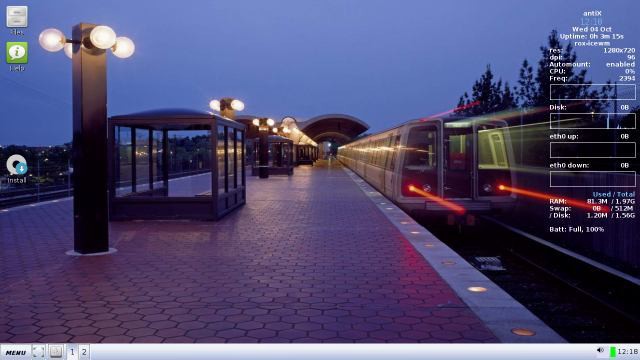
antiX — это легкий дистрибутив Linux, основанный на Debian. Он славится тем, что в системе не используется “systemd”. Если вы не знакомы с термином “systemd”, то вам должно быть все равно, что antiX не использует “systemd”.
Вместо обычного графического окружения рабочего стола, antiX использует менеджер окон icewm, чтобы система без проблем могла бы работать даже на самом слабом оборудовании. antiX может быть использован как быстрая LiveCD/LiveUSB-система для восстановления компьютера.
Минимальные системные требования для antiX Linux:
RAM: 256 МБ оперативной памяти
CPU: PIII процессоры
Место на жестком диске: 2.7 ГБ свободного дискового пространства
Скачать дистрибутив вы можете здесь.
3. SparkyLinux
Третье место в нашем списке занимает SparkyLinux. SparkyLinux — это еще один легкий дистрибутив Linux, который, помимо старых компьютеров, нацелен на современное оборудование. Именно поэтому у данного дистрибутива имеются две версии, одна из которых идет со всеми нужными установленными инструментами, кодеками, плагинами и т.д, чтобы система была готова к работе при первом запуске.
SparkyLinux основан на Debian и имеет несколько вариантов графического окружения рабочего стола, включая LXDE, OpenBox/JWM, e17, MATE, LXQt, Cli и GameOver edition. LXQt работает намного быстрее, чем другие упомянутые прежде окружения, кроме Cli (Интерфейс командной строки).
Минимальные системные требования для SparkyLinux:
RAM: 256 МБ оперативной памяти для LXDE, e17, Openbox, GameOver и 384 МБ оперативной памяти для MATE, LXQt
CPU: i486/amd64
Место на жестком диске: 5 GB свободного дискового пространства
Скачать дистрибутив вы можете здесь.
2. Puppy Linux
Последний релиз Puppy Linux — это Puppy Linux 6.0.2 Tahrpup CE, размер которого составляет всего 199–201 МБ (!). Данный дистрибутив можно загрузить с USB-накопителя совсем небольшого размера.
Puppy Linux может быть загружен с Live CD/DVD/USB, а после загрузки вы можете извлечь CD/DVD/USB и Puppy Linux по-прежнему будет работать без сбоев. Puppy загружается и работает из оперативной памяти, что делает его чрезвычайно быстрым. Помимо прочего, вы можете сохранять любые данные на том же USB, с которого загружаете Puppy Linux.
По умолчанию, Puppy Linux использует менеджеры окон JWM и Openbox, что значительно снижает потребление ресурсов. Puppy Linux содержит набор только базовых приложений. Например, Gnumeric для таблиц, Abiword в качестве альтернативы Microsoft Word и различные программы для редактирования графики и воспроизведения мультимедиа.
Минимальные системные требования для Puppy Linux:
RAM: 64 МБ (рекомендуется 256 МБ)
CPU: 333 МГц
Скачать дистрибутив вы можете здесь.
1. Tiny Core
Готовьтесь испытать восторг от Tiny Core. Бьюсь об заклад, даже самое маленькое приложение для редактирования изображений на Windows будет тяжелее, чем Tiny Core Linux. Да, его вес всего лишь 16 МБ (!!). Загрузка небольшого видео низкого качества занимает и то больше времени, чем загрузка Tiny Core Linux.
Система поставляется только с самыми необходимыми программами и минималистичным интерфейсом. Если у вас остался очень древний компьютер, установите Tiny Core и познакомьтесь с этим маленьким чудом. Он загружается быстрее, чем любая другая известная ОС.
Tiny Core Linux основан на дистрибутиве Damn Small, но на данный момент он полностью независим. По умолчанию, Tiny Core идет вместе с графическим интерфейсом FLTK/FKWM и BusyBox. Многих вещей вам будет не хватать, но не волнуйтесь, если хотите, вы можете установить все это вручную.
Существует три версии Tiny Core: Core, Tiny Core и CorePlus. Первая версия содержит только CLI (Интерфейс командной строки) и с ним смогут работать только опытные/продвинутые пользователи. Текущая версия Core весит всего лишь 9 МБ.
Tiny Core предназначен для обычного пользователя, который знаком с GUI (Графический интерфейс пользователя). Текущая версия TinyCore имеет размер 16 МБ.
Core Plus — это установочный образ, а не дистрибутив. Рекомендуется новым пользователям, у которых есть доступ только к беспроводной сети или тем, кто использует не английскую раскладку клавиатуры. Дистрибутив включает в себя базовую Core System с утилитами для настройки системы: выбор из 7 менеджеров окон, поддержку беспроводной связи через множество firmware файлов и ndlswrapper, поддержку неанглийской раскладки и инструмент для ремастеринга. Размер текущей версии CorePlus — всего лишь 72 МБ.
Минимальные системные требования для Tiny Core Linux:
RAM: 46 МБ (рекомендуется 64 МБ)
CPU: Pentium 2
Скачать дистрибутив вы можете здесь.
На этом наша короткая подборка подошла к концу, надеюсь вы нашли для себя что-нибудь нового. Больше подобных статей можно читать в телеграм-канале Нейрон (@neurondata)
Источник
Lightweight Linux Distros for Old Laptop (2021)
Do not discard that old PC or laptop yet. You can use a lightweight Linux distro to make them as good as new. Some of these Linux distros are specifically for use in older machines.
You can use any of the lightweight Linux distros and bring your old machine back to life. In as much we focus on the old distros, we do have some new releases that do not require many resources that can re-invent your old computers.
Are you in any or all of the situations below?
- Your computer is but still feel like you can revive it
- Your computer is modern but runs on low power
- You need to install a modern computer to reserve resources to other demanding tasks
If you find yourself in any of the above situations, then the best choice of action would be to start looking for the best lightweight Linux distros for old computers.
1. Lubuntu
Minimum System Requirements
- Pentium II or Celeron CPU with Physical Address Execution (PAE)
- 128 MB of Ram
- 2 GB of hard drive
As the name suggests, Lubuntu is member of the popular Ubuntu family. It runs on LXDE desktop environment and as such it one of the official flavors of Ubuntu. Lubuntu works well with old computers, and its lightness is visible in its speed and support for older hardware.
It has a set of applications and software with tools like office, internet, graphics applications, and related utilities. The applications running within Lubuntu utilize fewer resources, and they have better alternatives if need be.
You can access thousands of additional packages via the Ubuntu software repository. When the Operating System is merged with Razor-qt to develop LXQt.
2. Linux Lite
Minimum System Requirements
- 700 MHz Processor speed
- 512 MB of RAM
- Resolution of 1024 X 768
- 5 GB of hard disk space
From its name “lite,” it means there is no need for high-end hardware requirements. Even a beginner will find a lot of comfort using it for the first time. Linux Lite runs on Ubuntu Long Term Support (LTS) with a support life of up five years.
The Operating System is functional with no need to install extra software the moment you finish your installation.
Some preinstalled applications like Firefox for web browsing, emails use Thunderbird, Dropbox for cloud services, LibreOffice, VLC media player, GIMP for image editing and Lite tweaks to adjust your desktop settings.
Uses the simplified XFCE desktop environment and the fact that it based on Ubuntu means you will have more support and resources available for you to follow.
Note: There will be no 32bit ISO from Series 4.x onwards and supported until April, 2021
3. Tiny Core
Minimum System Requirements
- 46 MB RAM with 64 MB as the recommended size
- Pentium II processor
Known as one of the lightest Linux distros, TinyCore has a very small memory footprint of only 16 Mb !. It was developed from a small project into something that can run independently. The distro is minimalistic with very few installed software.
The distro uses the FLTK /FKWM and busy box desktops by default. Some components for hardware graphics may be missing, but you can install them manually. Tiny Core is available in three different editions, i.e. CorePlus, Tiny Core, and Core.
The core is the base system that uses the Command Line Interface (CLI). For advanced users, this distro can work well as long as they do not need the graphical interface, which is available in TinyCore edition.
CorePlus is an image that will work well for users with a wireless network. The installation tools provide for the basic setup of which windows manager to use, wireless support through different firmware files, keyboard support, and a remastering tool
The size may amaze you, but its capability is that of a big Operating System especially when installed on old PCs and laptops.
4. AntiX Linux
Minimum System Requirements
- 256 MB of RAM
- Pentium III processor
- 7 GB of hard disk space
antiX is a distribution based on Debian Linux boasting of a systemd-free Linux distribution. The window manager that comes with this OS is the icewm that keeps the system on low resource demands.
There is no bundled software, but you can always download and install if you have access to the internet.
5. Peppermint
Minimum System Requirements
- 1 GB of RAM with a recommended option of 2 GB
- Intel x86-processor architecture
- At least 4 GB of free hard disk space
The original creation of Peppermint was intended to make it look like a web-centered approach with netbooks in mind. It is a cloud-based Linux distribution with minimal hardware requirements.
The desktop environment is also Ubuntu based and uses the LXDE to give its users a smoother experience. Peppermint uses an ICE application that integrates websites into a desktop app.
It has a perfect user guide that new users may find resourceful with a forum for troubleshooting issues.
6. LXLE
Minimum System Requirements
- 512 RAM with a recommendation of 1 GB
- Pentium III with a recommendation of Pentium IV
- 8 GB hard disk space
LXLE is more or less another version of Lubuntu LTS, which to some people it is a Lubuntu tweak used for a specific purpose in old PCs and laptops. It is light in weight and has the best and intuitive user interface.
Tweaks done on this distro is to improve performance and avails a wide range of lightweight applications installed by default.
7. Bodhi Linux
Minimum System Requirements
- 256 MB of RAM
- 4 GB of hard disk space
- GHz Processor
Bodhi Linux will give life to your old PCs and laptops due to its lightness. It has no extra software making the image size small and runs freely utilizing less memory. The good thing is that you can do custom installations of the software you need.
The package enlightenment makes this distro run faster than other window managers used in other Linux distros. You do not have to worry about using enlightenment or any other package because Bodhi Linux has user guides useful in such situations.
Some essential Apps such as Midori for the web, Ephoto for graphics, and ePad for editing text are available. Applications for multimedia are not available during installation but are available through the App Center.
8. CrunchBang ++
Minimum System Requirements
- 512 MB of RAM
- Pentium IV processor
Another name for the CrunchBang is the CBPP or #! ++ Or CrunchBang Plus Plus. The distro is the cloning of Linux distribution CrunchBang Linux known for its simplicity and lightweight. CrunchBang ++ is designed to work with old machines without any bottlenecks.
The distro is based on Debian 9 with a minimal interface design that uses the open box window manager. The overall design is to offer an easy-to-use interface with good functionalities. This simply explains it as a minimalistic, simplified, and sleek interface.
Some default Apps in CrunchBang ++ are Terminal emulator, Geany IDE, Gimp for image editing, Thunar file manager, VLC media player, XFburn burning software, Viewnior image viewer, Iceweasel for the web, gFTP transfer client, AbiWord for office applications, etc.
9. SparkyLinux
Minimum System Requirements
- 256 MB of RAM if you are using LXDE, Openbox, Gameover, and e17. 384 MB of RAM for MATE and LXQt
- I486 or amd64 processor
- 5 GB of hard disk space
SparkyLInux is another lightweight distribution that works in both old and modern computers. The distro runs immediately after installation. It based on the testing branch of Debian with several desktop environments.
The distro has two editions: the full and base editions. The full edition has applications that do not need manual installation. The base edition does not have heavy applications meaning it is light and does not eat much of computer resources.
The good thing is that all its applications can be installed from within its repositories. Each edition of SparkyLInux has different default applications. Therefore, you need to choose your flavor carefully.
10. Puppy Linux
Minimum System Requirements
- 64 MB of RAM and a recommendation of 256 MB
- 333 MHz processor speed
Puppy Linux is regarded as one of the best lightweight Linux distros that you can find out there because of its small memory footprint, ease of use, customizability and flexibility. It can easily run on an old PC or laptop and has many Apps that come bundled in the installation disk. The distro can run from a small size USB stick where it can also run a live system.
Everything it does is saved on RAM making the system very fast, and if you are running a live system from the USB, you can save some data on it. Puppy Linux uses Openbox and JWM window managers as default window managers; the two do not consume most of the system resources.
You use Puppy Linux it is best not to demand much from its graphical applications, it will be best if you use what the system provides for better results. The distro is built for fast performance it does not have bundled applications apart from the basic ones like AbiWord for word-processing, selected graphics editing tools, media playback programs and Gnumeric for spreadsheets.
11. Trisquel Mini
Minimum System Requirements
- Uses the minimal graphical user interface requirements
- 256 MB of RAM
- Any Pentium processor
Trisquel Mini is a small, and lightweight version of a Trisquel based Ubuntu LTS. The software is made for old machines and laptops that consume little power and with low specifications.
It Uses the minimal LXDE desktop environment and X windows system, which is a perfect alternative to the GNOME or KDE/ Qt Apps. You can use the Synaptic Package Manager to install your software.
The installation media can run as a Live CD medium. The graphical presentation is more or less the same as the Ubuntu one.
12. MX Linux
Minimum System Requirements
- A CD/DVD drive (and BIOS capable of booting from that drive), or a live USB (and
BIOS capable of booting from USB) - A modern i686 Intel or AMD processor
- 512 MB of RAM memory
- 5 GB free hard drive space
- For use as a LiveUSB, 4 GB free
MX Linux is a stable and popular Linux distribution based on Debian whose current version is 18.3 at the time of penning down this article. By default, it ships with an XFCE desktop with lots of features and customizations. The UI is quite basic and simple. This simplicity echoes the MXLinux philosophy and beginners should easily get started and Professional users can make customizations that can suit them. MX Linux is renowned for its high performance while at the same time keeping it simple on the UI. It comes with several built-in apps that let you do everything from managing your repositories to tweaking your desktop and so much more.
13. Devuan Linux
Devuan Linux is a fork of Debian that surprisingly runs on the older SysVinit instead of the latest systemd init that is now used by modern Linux distributions. However, it comes with its own package repository which closely mirrors Debian’s upstream. It comes with Xfce as the default desktop background which is ideal for PCs with low RAM and CPU resources.
Minimum system requirements
- At least 15GB hard disk space
- A minimum of 2GB of ram; but the more the better
- USB or CD/DVD boot support
Conclusion
That is all we had for you today. We hope you can make a more informative decision when selecting an old distro to revive your old machines. Installing any of the lightweight Linux distros above would be a good gamble because of the readily available support forums and tutorial guides.
When dealing with small distros, there is no need for detailed research because all you need is an application that depends on fewer system resources and has a simple user interface. As long as you maintain the installation, you will never have problems using any lightweight Linux distribution.
Do not forget to tell us about your favorable Lightweight Linux distro that you have used or plan to use in one of your old PC or laptop.
Источник
